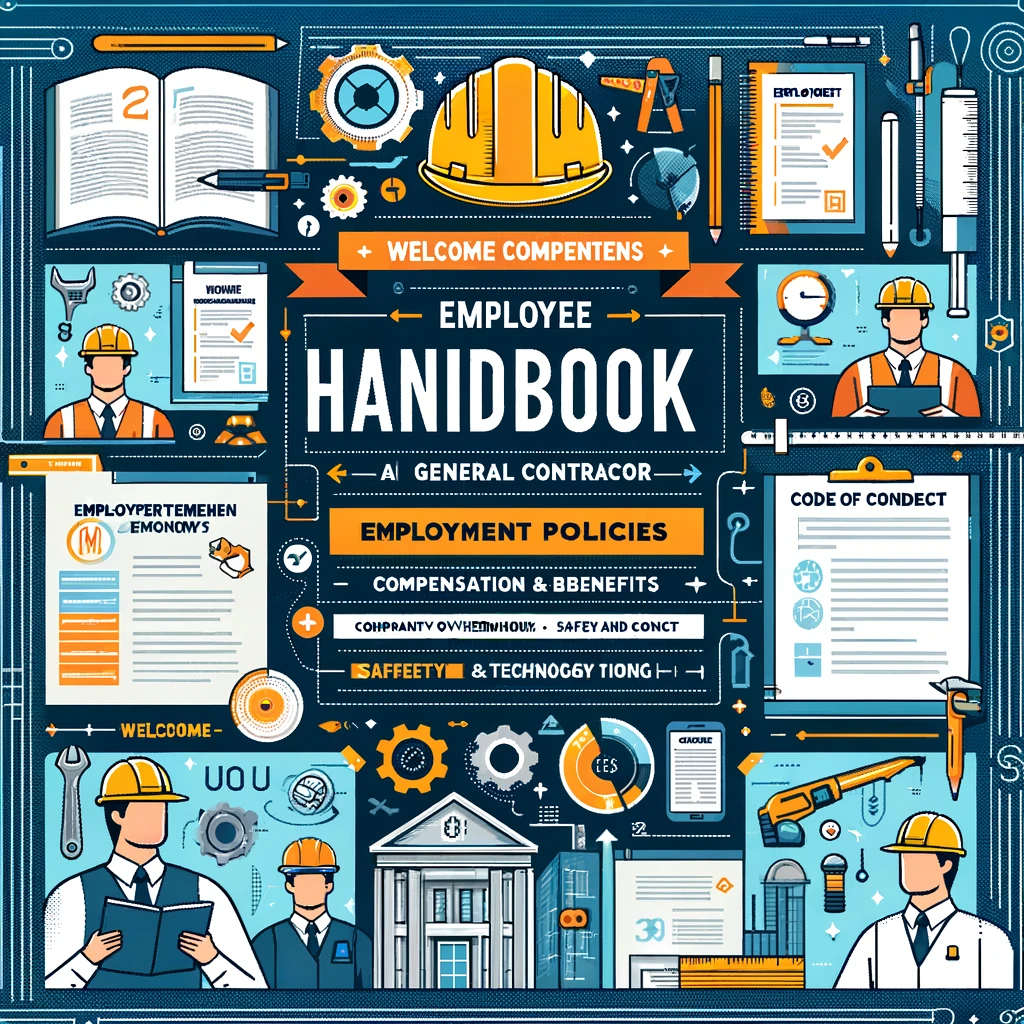Crafting the Ultimate Employee Handbook for General Contractors: A Comprehensive Guide
In the dynamic and often challenging field of general contracting, establishing clear, comprehensive guidelines and expectations for your team is crucial. An employee handbook serves as the cornerstone for communicating your company's policies, culture, and expectations to your employees. This detailed guide aims to outline the key components of an effective general contractor employee handbook, incorporating best practices and authoritative resources to ensure compliance, enhance understanding, and foster a positive work environment.

Introduction to Employee Handbooks for General Contractors
An employee handbook tailored for general contractors is more than just a document outlining company policies; it's a tool for onboarding, training, and guiding employees through their journey with your company. It helps in setting the tone for your company culture and ensures that employees understand their rights, responsibilities, and the standards expected of them.
The Importance of a Well-Structured Handbook
A well-structured employee handbook can significantly impact the efficiency and harmony of your workforce. It serves to:
Clarify expectations: Clearly outline job responsibilities, company policies, and behavioral expectations to prevent misunderstandings.
Promote compliance: Ensure that your company's policies are in line with state and federal employment laws.
Foster company culture: Introduce employees to your company's mission, values, and vision.
Mitigate legal risks: A comprehensive handbook can serve as a reference in resolving disputes and protecting against employment-related lawsuits.
Key Components of an Effective Handbook
Welcome Message: A brief introduction from the leadership team, welcoming new hires to the company and setting a positive tone.
Company Overview: Insight into the company's history, mission, vision, and core values.
Employment Policies: Detailed description of employment classifications, work hours, overtime policies, and procedures for resignation or termination.
Compensation and Benefits: Information on salary structures, performance reviews, benefits (health insurance, retirement plans), and leave policies.
Safety and Compliance: Guidelines on maintaining a safe work environment, including compliance with OSHA standards and reporting procedures for accidents or safety concerns.
Code of Conduct: Expectations regarding professional behavior, anti-harassment policies, confidentiality agreements, and conflict resolution processes.
Technology Use: Policies on the appropriate use of company-owned technology, internet use, and social media guidelines.
Acknowledgment Page: A section for employees to sign, acknowledging they have read and understand the handbook's contents.

Create & Review Your Contracts 10x Quality and Ease
Lawyer-level AI handles all your contract needs, with real lawyers providing safeguarding support

Legal Considerations and Compliance
Ensuring your employee handbook complies with local, state, and federal laws is paramount. This involves:
Regular Updates: Employment laws are subject to change. Regularly review and update your handbook to reflect current legal requirements.
State-Specific Regulations: Be aware of state-specific laws that may impact your policies, especially if you operate in multiple states. Resources like The National Conference of State Legislatures (NCSL) can provide valuable information.
Legal Review: Have your handbook reviewed by legal professionals specializing in employment law to ensure compliance and mitigate potential legal issues.
Best Practices for Implementing Your Handbook
Accessibility: Make sure the handbook is easily accessible to all employees, ideally in both printed and digital formats.
Orientation and Training: Incorporate the handbook into your onboarding process, ensuring new hires understand its contents and how it applies to their role.
Employee Feedback: Consider feedback from your employees as a valuable resource for improving and updating the handbook.
Conclusion
An employee handbook is an essential tool for general contractors aiming to build a strong, informed, and cohesive team. By covering the key components outlined above and ensuring compliance with legal standards, you can create a document that not only guides your employees but also protects your business. As the construction industry continues to evolve, so should your employee handbook, adapting to new challenges and opportunities that arise.
For further guidance and resources on creating an effective employee handbook, visiting sites like Wikipedia for foundational knowledge, and leveraging educational resources from construction management programs can provide deeper insights into best practices and compliance strategies.
Remember, a well-crafted employee handbook is a reflection of your company's commitment to transparency, fairness, and excellence in the field of general contracting.

